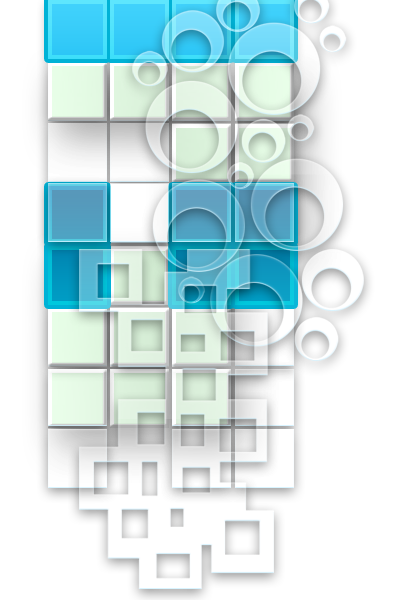
3D/2D Animations
We understand the requirement of 3D/2D as well as animation as apparent to different fields, which has made us to bring forth feasible and devoted services to cater a diverse market....
Animation is the rapid display of a sequence of images of 2-D or 3-D artwork or model positions in order to create an illusion of movement. The effect is an optical illusion of motion due to the phenomenon of persistence of vision, and can be created and demonstrated in several ways. The most common method of presenting animation is as a motion picture or video program, although there are other methods.
Traditional animation (also called cel animation or hand-drawn animation) was the process used for most animated films of the 20th century. The individual frames of a traditionally animated film are photographs of drawings, which are first drawn on paper. To create the illusion of movement, each drawing differs slightly from the one before it. The animators' drawings are traced or photocopied onto transparent acetate sheets called cels, which are filled in with paints in assigned colors or tones on the side opposite the line drawings. The completed character cels are photographed one-by-one onto motion picture film against a painted background by a rostrum camera.
The traditional cel animation process became obsolete by the beginning of the 21st century. Today, animators' drawings and the backgrounds are either scanned into or drawn directly into a computer system. Various software programs are used to color the drawings and simulate camera movement and effects. The final animated piece is output to one of several delivery media, including traditional 35 mm film and newer media such as digital video. The "look" of traditional cel animation is still preserved, and the character animators' work has remained essentially the same over the past 70 years. Some animation producers have used the term "tradigital" to describe cel animation which makes extensive use of computer technology.
Computer animation encompasses a variety of techniques, the unifying factor being that the animation is created digitally on a computer
.- 2D animation figures are created and/or edited on the computer using 2D bitmap graphics or created and edited using 2D vector graphics. This includes automated computerized versions of traditional animation techniques such as of, interpolated morphing, onion skinning and interpolated rotoscoping. 2D animation has many applications, including analog computer animation, Flash animation and PowerPoint animation. Cinemagraphs are still photographs in the form of an animated GIF file of which part is animated.
- 3D animation is digitally modeled and manipulated by an animator. In order to manipulate a mesh, it is given a digital skeletal structure that can be used to control the mesh. This process is called rigging. Various other techniques can be applied, such as mathematical functions (ex. gravity, particle simulations), simulated fur or hair, effects such as fire and water and the use of motion capture to name but a few, these techniques fall under the category of 3D dynamics. Well-made 3D/2D animations can be difficult to distinguish from live action and are commonly used as visual effects for recent movies. Toy Story (1995, USA) is the first feature-length film to be created and rendered entirely using 3D graphics.(sources : http://en.wikipedia.org)
Our 3D/2D Animation Services include
- Game Modeling & Animations: 3D/2D Game modeling includes some core concepts that when integrated bring forth the best experience in 3D/2D gaming. We are effective in offering solutions for modeling, rigging, texturing, as well as the animation of the props and characters for your 3D/2D gaming projects.
- Cinematics: As opposed to the development of low polygon modeling in 3D/2D gaming, projects such as animated films require highly detailed 3D/2D models and textures. We specialize in high polygon modeling, texturing, rigging and animation of characters and props for short animation movies and television serials.
- Medical Animations & Illustrations: With the effective and engaging medical animation videos from SilentDrifter Inc., your message for educational purpose or for marketing will be remembered for a longer time. Our expertise also lies in the modeling, texturing and animation of highly quality 3D/2D elements for medical animations and illustrations.
- Product Modeling & Animations: 3D/2D product Design serves as a better option than two dimensional drawings as they help to mark up to the customer standards. 3D/2D product Design plays an important and effective role in all pre-manufacturing and marketing processes of a Product. High quality 3D/2D Product Models developed by SilentDrifter Inc. prove to be an effective marketing tool for our clients.
- Architectural Modeling & Animations: 3D/2D architectural modeling requires the technical art of developing more visually appealing representations of architectural projects. SilentDrifter Inc. provides you with complete solutions for all your 3D/2D architectural modeling needs.
- Logo Animations Logo Animations are a critical component as a promotional tool for a company. At SilentDrifter Inc. quality logo animations are developed keeping in mind the brand, nature of work and the principles of our clients.
- Interactive Presentations: We specialize in the development of interactive presentation using a combination of 3D/2D and Adobe Flash. These types of presentations are typically used for web-based applications in which 3D/2D elements are incorporated into websites or presentations using Adobe Flash, so that the end-user would have an interactive and visually appealing interface to view the website contents.
SilentDrifter Inc. has been able to excel in offering development solutions for individual essentials. We understand the requirement of 3D/2D as well as animation as apparent to different fields, which has made us to bring forth feasible and devoted services to cater a diverse market.